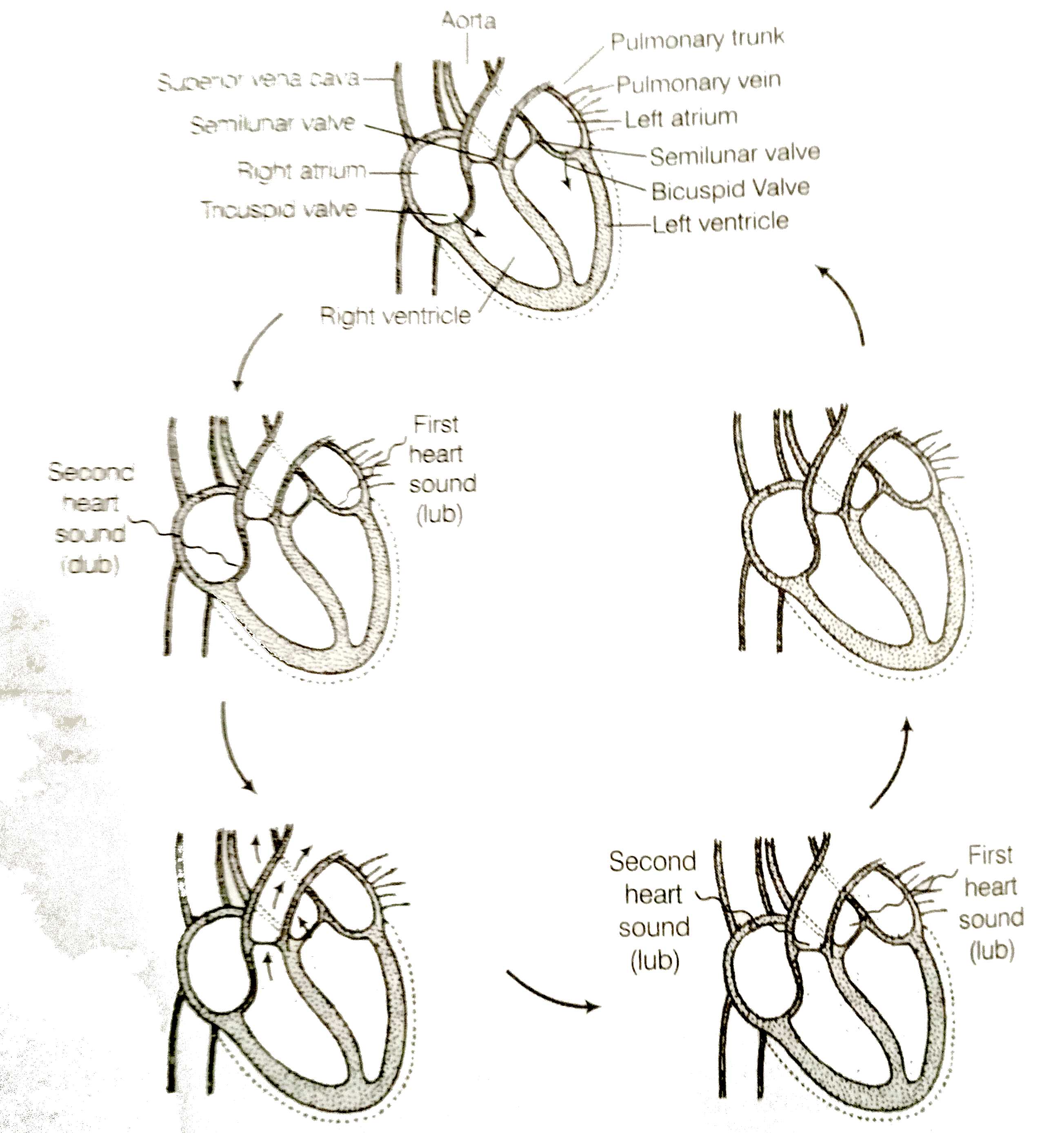Describe the events in cardiac cycle. Explain ’double circulation’.
Video Solution
Text Solution
The cardiac cycle consist of 5ne heart beat or one cycle of contraction and relaxation i.e., takes place in the cardiac muscles. During the heart beat there is a contraction and relaxation of atria and ventricles. The contraction phase is referred as systole while the relaxation phase is called as diastole.
The successive events of the cardiac cycle are briefly described as below
(i) Atrial Systole The atria contract due to the wave of contraction, stimulated by the SA node. The blood is forced into the ventricles as the bicuspid and tricuspid valves are open.
Beginning of Ventricular Systole The contraction of ventricles begin due to the wave of contraction stimulated by AV node. This led to the closing of bicuspid and tricuspid valve producing part of first heart sound, i.e., lub.
(iii) Complete Ventricular Systole After ventricular contraction, the blood flows into the pulmonary trunk and aorta as the semiiunar valves open.

Beglnntng ot the Ventrlcutar Dtaetole The ventricles relax and the eemuunar vatves av. closed. This cause the second heart sound, I.e., dub.
(e) Complete Ventrlcutar Dtastote The opening of tricuspid and bicusosd valves due tot in pressure of ventricles and blood flows from the atria into the ventricles. Contractor, q the heart does not cause this blood to flow. backward direction, due to the tact that m. pressure within the relaxed ventricles is less than that of the atria and veins.
The duration of cardiac cycle last for 0.8 sec.
In double circulation, the blood passes twice through the heart during one complete cycte
(i) Pulmonary circulation
(ii) Systemic circulation
Significance of Double Circulation In birds and mammals, two separate circulatay pathways are present. Oxygenated and deoxygenated blood received by the left and right atria respectively passes on to the ventricles of the same sides. The ventricles pump it out without mixing the oxygenated and deoxygenated blood in the heart.
|
Updated on:21/07/2023
Topper's Solved these Questions
- BOOK - NCERT EXEMPLARCHAPTER - Body Fluids and Circulation EXERCISE - SHORT ANSWER TYPE QUESTION9videos
Body Fluids and Circulation
- BOOK - NCERT EXEMPLARCHAPTER - BIOMOLECULES EXERCISE - Long Answer Type Questions5videos
BIOMOLECULES
- BOOK - NCERT EXEMPLARCHAPTER - BREATHING AND EXCHANGE OF GASESEXERCISE - SATQ7videos
BREATHING AND EXCHANGE OF GASES
Similar Questions
Knowledge Check
- Question 1 - Select One
In complete double circulation
AThere is no mixing of oxygenated and deoxygenated bloodBThe left and right ventricles pump out oxygenated and deoxygenated blood, respectivelyCThere are two separate circulatory pathwaysDAll of these - Question 2 - Select One
A cardiac cycle invloves
AJoint diastole - ventricular systole-auricular systoleBAuricular systole-ventricular systole-complete cardiac distoleCAuricular systole-joint diastole-ventricular systoleDAuricular systole-ventricular diastole-joint diastole - Question 3 - Select One
A cardiac cycle invloves
A(1)Joint diastole-ventricular systole-auricular systoleB(2) Auricular systole-ventricular systole-completecar-siac diastoleC(3) Auricular systole-joint diastole-ventricular systoleD(4) Auricular systole-ventricular diastole-joint diastole

